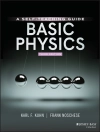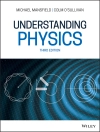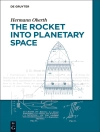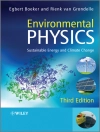Focuses on the common recurring physical principles behind sophisticated modern devices
This book discusses the principles of physics through applications of state-of-the-art technologies and advanced instruments. The authors use diagrams, sketches, and graphs coupled with equations and mathematical analysis to enhance the reader’s understanding of modern devices. Readers will learn to identify common underlying physical principles that govern several types of devices, while gaining an understanding of the performance trade-off imposed by the physical limitations of various processing methods. The topics discussed in the book assume readers have taken an introductory physics course, college algebra, and have a basic understanding of calculus.
- Describes the basic physics behind a large number of devices encountered in everyday life, from the air conditioner to Blu-ray discs
- Covers state-of-the-art devices such as spectrographs, photoelectric image sensors, spacecraft systems, astronomical and planetary observatories, biomedical imaging instruments, particle accelerators, and jet engines
- Includes access to a book companion site that houses Power Point slides
Modern Devices: The Simple Physics of Sophisticated Technology is designed as a reference for professionals that would like to gain a basic understanding of the operation of complex technologies. The book is also suitable as a textbook for upper-level undergraduate non-major students interested in physics.
Table des matières
Preface xi
About the Companion Website xv
1 Principles of Physics and the Relevance to Modern Technologies 1
1.1 CM, EM, and QM: The Backbone of Physics 3
1.2 Photonics and Electronics 5
2 Everyday Home Appliances 9
2.1 The Air Conditioner 10
2.2 Microwave Ovens 18
2.3 Smoke Detectors 25
2.4 Compact Discs, Digital Versatile Discs, and Blu-Ray Discs 27
2.5 Photocopiers and Fax Machines 37
3 Devices Encountered in Modern Life 43
3.1 Metal Detectors for Airports and Traffic Lights 43
3.2 Barcode Scanners, Quick Response Codes, and Radio-Frequency Identification Readers 47
3.3 Global Positioning 53
3.4 Transportation Technologies 57
3.4.1 Internal Combustion Engines versus Electric Motors 57
3.4.2 Alternative Fuels 58
3.4.3 Speed Radar Guns 60
3.4.4 High-Speed Rail 67
4 Vacuum Systems: Enabling High-Tech Industries 69
4.1 Vacuum Chamber Technology 70
4.2 Physics of Some Vacuum Gauges 76
4.3 Low Vacuum via Venturi, Mechanical, or Sorption Pumps 78
4.4 HV via Diffusion, Turbomolecular, or Cryogenic Pumps 80
4.5 UHV via Ion Pumps 84
5 Cleanrooms, an Enabling Technology 87
6 Solid-State Electronics 91
6.1 Conducting, Semiconducting, and Insulating Materials 95
6.2 Resistors, Capacitors, and Inductors 101
6.3 Diodes and Transistors 110
6.4 FET, JFET, MOSFET, CMOS, and TTL 119
6.5 Summary 124
7 High-Tech Semiconductor Fabrication 127
7.1 Thin Films 127
7.2 Thin-Film Deposition Methods 132
7.3 High-Purity Crystals via MBE 138
7.4 Photolithography and Etch Techniques 141
7.5 In Situ and Intermediate-Stage Tests 145
7.6 Device Structures and IC Packaging 152
8 Materials Science—Invaluable High-Tech Contributions 155
8.1 The Use of Composite Materials 156
8.2 Thin-Film Multilayers 157
8.3 Nanotechnology 158
9 Light Sources 161
9.1 Incandescent Lamps 166
9.2 Gas Discharge Lamps 168
9.3 Fluorescent Lamps 171
9.4 Light Emitting Diodes 174
9.5 X-Ray Sources 175
9.6 Lasers 177
9.7 Synchrotron Light Sources 180
9.8 Summary of Light Sources 180
10 Some Basic Physics of Optical Systems 183
10.1 Refractive and Reflective Optics and Their Uses 184
10.2 Polarization and Birefringence 188
10.2.1 Law of Malus and Brewster’s Angle 188
10.2.2 Dichroism and Birefringence 190
10.2.3 Retarder Plates and Circular Polarization 192
10.3 Diffraction 194
10.3.1 Huygens’ Principle and Diffraction from a Single Slit 194
10.3.2 Fresnel Zone Plate 196
10.3.3 Diffraction Gratings 198
10.4 Holography 200
10.4.1 Basic (Absorption) Holography 200
10.4.2 Temporal and Spatial Coherence 202
10.4.3 Other Methods of Holography and Applications 203
10.5 Primary Aberrations 205
11 Optical Couplers Including Optical Fibers 217
11.1 Optical Fibers and Hollow Waveguides 218
11.2 Couplers for Long Distances 223
11.3 Optical Couplers as a Means of Electronic Isolation 228
12 Spectrographs: Reading the “Bar Code” of Nature 231
12.1 Prisms, Ruled Gratings, and Holographic Gratings 240
12.2 Long-Slit Spectrographs 248
12.3 Integral Field Unit and Fabry–Pérot 249
12.4 Echelle Spectrographs 254
12.5 Raman Spectrographs 255
13 Optical and Electron Microscopy 259
13.1 Optical Microscopes 260
13.1.1 The Magnifier 260
13.1.2 The Compound Microscope 261
13.1.3 Numerical Aperture, Resolution, and Depth of Field 262
13.1.4 Alternative Methods of Optical Microscopy 265
13.2 The Transmission Electron Microscope 266
13.3 Electron–Matter Interactions 271
13.4 Bragg’s Diffraction 273
13.5 Scanning Probe Microscopes 275
14 Photoelectric Image Sensors 277
14.1 Solid-State Visible Wavelength Sensors 280
14.2 Photoemissive Devices for UV and X-Rays 284
14.3 Infrared “Thermal” Sensors and Night Vision Sensors 287
15 Image Display Systems 291
15.1 The Human Visual System 293
15.2 Who Invented Television? 300
15.3 Traditional and High-Definition Tv Display Formats 301
15.4 Cathode Ray Tubes 306
15.5 Liquid Crystal Displays 308
15.6 Plasma Displays 310
15.7 Digital Micro-Mirror Devices 311
15.8 Touch Screens 314
15.9 Electrophoretic Displays 315
15.10 Near-Eye Displays, Augmented Reality, and Virtual Reality 317
15.11 Stereoscopic, Autostereoscopic, and Holographic 3D Displays 319
16 Spacecraft Systems 325
16.1 Operating in Space: An Overview 326
16.2 Attitude Control System 330
16.3 Spacecraft Power 337
16.4 Thermal and Other Environmental Control 339
16.5 Command, Control, and Telemetry 341
16.6 Launch, Propulsion, Station Keeping, and Deorbit 345
17 Astronomical and Planetary Observatories 353
17.1 Telescope Designs 354
17.2 Very Large, Ultra-Lightweight or Segmented Mirrors 358
17.3 Adaptive Optics and Active Optics 362
17.4 Space Observatories 365
17.5 Planetary Probes 372
18 Telecommunications 377
18.1 Physical Connections: Phone Lines, Coaxial Cable, and Fiber Optics 378
18.2 Analog Free-Space Channels: TV, Radio, Microwave Connections 384
18.3 Digitally Modulated Free-Space Channels 390
18.4 The Network, Multiplexing, and Data Compression 392
19 Physics of Instruments for Biology and Medicine 397
19.1 Imaging Instruments 397
19.1.1 CT Scanners 398
19.1.2 Magnetic Resonance Imaging 398
19.1.3 Ultrasonography and Ultrasonic Lithotripsy 408
19.2 Minimally Invasive Probes and Surgery 410
19.3 Laser Technologies 411
19.4 Miscellaneous Electronic Devices 415
20 A-Bombs, H-Bombs, and Radioactivity 419
20.1 Alpha, Beta, and Gamma Ray Radiation 421
20.2 A-Bombs, H-Bombs, and Dirty Bombs 423
20.3 Radiation Safety, Detection, and Protection 428
20.4 Industrial and Medical Applications 431
21 Power Generation 433
21.1 Principles of Electric Generators 434
21.2 Power Storage and Power Content of Fuels 435
21.3 The Power Grid 439
22 Particle Accelerators—Atom and Particle Smashers 443
22.1 Lorentz Force, Deflection, and Focusing 446
22.2 Beam Generation, Manipulation, and Characterization 448
22.3 DC Accelerators 450
22.4 RF Linear Accelerators 450
22.4.1 Motivation and History 450
22.4.2 Linac Components and Operation 452
22.4.3 Beam Bunch Stability and RF Bucket 454
22.4.4 Power Budget and Linac Applications 454
22.5 Cyclotrons 456
22.6 Synchrotron Radiation and Light Sources 462
22.6.1 Dipole Radiation and Larmor’s Formula 462
22.6.2 Wigglers and Undulators 464
22.6.3 First-to-Fourth Generations of Light Sources and Applications of SR 466
22.6.4 Free-Electron Lasers 468
23 Jet Engines, Stratospheric Balloons, and Airships 471
23.1 Ramjets, Turbojets, and Turbofan Jets 474
23.2 Stratospheric Balloons 476
23.3 Future Airships 484
Appendix A Statistics and Error Analysis 489
Bibliography 497
Index 503
A propos de l’auteur
Charles L. Joseph, Ph D, is a retired research professor from the Department of Physics and Astronomy at the Rutgers University, who specialized in technology development for NASA flight missions. Prof. Joseph has more than 30 years’ experience working closely with aerospace and electro-optical companies as well as government laboratories, taking technologies from experimental breadboard devices to ruggedized instruments suitable for NASA missions. He was a co-investigator and the detector scientist on STIS, a second-generation instrument for the Hubble Space Telescope.
Santiago Bernal, Ph D, is an associated research scientist at the Institute for Research in Electronics and Applied Physics (IREAP) at the University of Maryland. Dr. Bernal received his B.S. in physics from the National University of Colombia in 1981. He joined the IREAP in 2000 and has since been the leading experimentalist on the University of Maryland Electron Ring.












